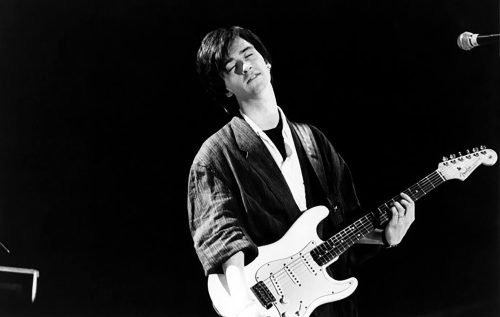Johnny Marr, the virtuoso guitarist and co-founder of The Smiths, has been a pivotal figure in shaping the landscape of alternative rock. Born in Manchester in 1963, Marr’s early exposure to diverse musical styles laid the foundation for his innovative approach to guitar playing. Alongside the enigmatic Morrissey, Marr formed The Smiths in 1982, and the band quickly rose to prominence, leaving an indelible mark on the music scene of the 1980s.
The Smiths’ sound was a departure from the dominant trends of their era, characterized by Marr’s jangly guitar work, intricate melodies, and rich harmonic textures. His contributions were crucial in defining the band’s unique sonic identity, setting them apart from their contemporaries. While Morrissey’s lyrical prowess and distinctive voice were integral to The Smiths’ appeal, it was Marr’s inventive guitar techniques that provided the perfect counterpoint, creating a sound that was both nostalgic and forward-thinking.
Early Influences and Background
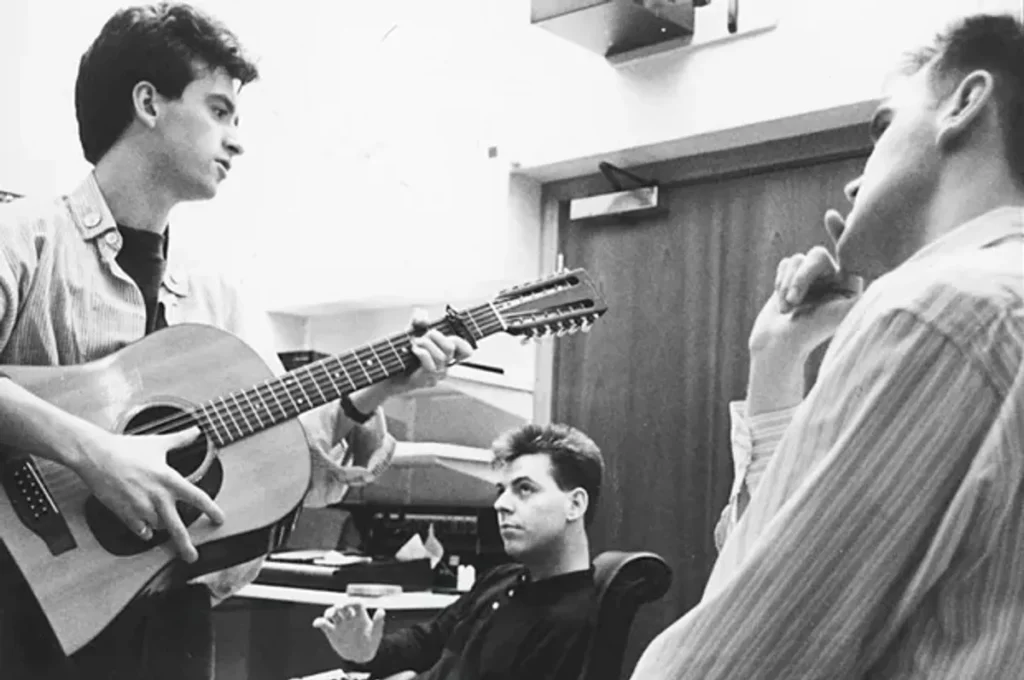
Johnny Marr’s musical journey began in the vibrant city of Manchester, where he was born John Martin Maher on October 31, 1963. Growing up in a working-class Irish family, Marr was surrounded by music from an early age. His parents were avid music lovers, exposing him to a wide range of genres, from traditional Irish folk to the rock ‘n’ roll sounds of the 1960s. This eclectic musical environment played a crucial role in shaping Marr’s diverse taste and creative outlook.
Influences
One of Marr’s earliest and most profound influences was the glam rock movement of the early 1970s. Bands like T. Rex and David Bowie captivated the young Marr, inspiring him to pick up the guitar. By the age of 13, he had already formed his first band, and his natural talent and dedication quickly became apparent. Marr’s early fascination with the intricate, melodic lines of Marc Bolan and the innovative chord structures of Bowie would later become hallmarks of his own playing style.
Another pivotal moment in Marr’s development came with the discovery of punk rock in the late 1970s. Bands like the Sex Pistols, The Clash, and Buzzcocks introduced him to a raw, energetic approach to music that resonated deeply. The DIY ethos of punk rock encouraged Marr to experiment with his playing and songwriting, fostering a sense of creativity and individuality that would be essential in his later work with The Smiths.
In addition to these formative influences, Marr was also deeply inspired by the jangly guitar sounds of the 1960s, particularly the work of The Byrds’ Roger McGuinn. McGuinn’s use of the Rickenbacker 12-string guitar had a lasting impact on Marr, who would adopt and adapt this shimmering sound in his own playing. The combination of these diverse influences helped Marr develop a unique style that blended the melodic sensibilities of 1960s pop with the edgy energy of punk and the sophistication of glam rock.
Key moments that further shaped Marr’s guitar playing style include his early collaborations and the formation of The Smiths. Meeting Morrissey in 1982 marked the beginning of a partnership that would redefine alternative rock. Marr’s innovative guitar work provided the perfect counterpoint to Morrissey’s introspective lyrics, resulting in a sound that was both groundbreaking and deeply influential.
Technical Innovations and Gear
Johnny Marr’s technical prowess and innovative approach to guitar playing were instrumental in crafting the distinctive sound of The Smiths. His choice of guitars, equipment, and the creative modifications he employed set him apart from his contemporaries and contributed to the band’s unique sonic landscape.
Overview of Marr’s Preferred Guitars and Equipment
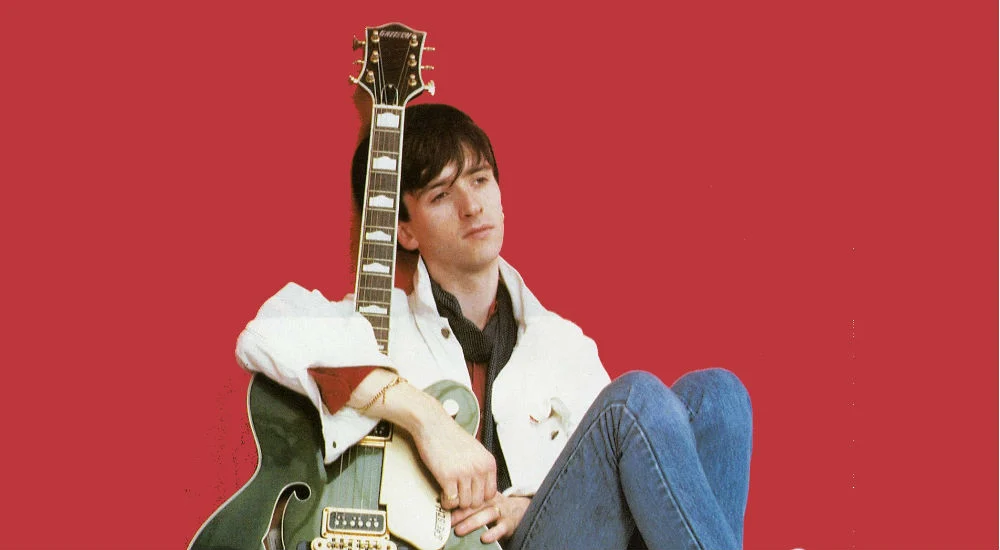
Marr’s arsenal of guitars is diverse, but he is particularly known for his affinity for the Fender Jaguar, which he helped bring back into popularity. His signature model, the Johnny Marr Jaguar, reflects his specific preferences and modifications, offering a blend of classic design and modern functionality. In addition to the Jaguar, Marr frequently used a Rickenbacker 330 and a Gibson ES-355, both of which contributed to his signature jangly sound. These guitars, known for their bright, clear tones, were ideal for Marr’s intricate chord work and melodic lines.
His amplifiers and effects pedals were also carefully chosen to complement his playing style. Marr often used Fender Twin Reverb and Vox AC30 amplifiers, which are renowned for their clean, sparkling tones and ability to handle complex harmonic content. His pedalboard included a range of effects, from classic overdrives and compressors to more unconventional choices like the Electro-Harmonix Memory Man delay and the A/DA Flanger.
Specific Innovations in His Guitar Setup
Marr’s technical innovations extended beyond his choice of instruments and into the realm of custom modifications and setup. One of his most notable modifications was the wiring of his Fender Jaguar, which included a custom switching system that allowed for greater tonal versatility. This setup enabled Marr to switch between series and parallel pickup configurations, providing a broader range of sounds from a single instrument.
Additionally, Marr was known for his meticulous attention to intonation and string action. He often adjusted his guitars to have a lower action, which facilitated his fast, fluid playing style and allowed for precise execution of complex chord voicings and arpeggios. This attention to detail ensured that his guitars were always in optimal playing condition, capable of delivering the clarity and articulation that defined his sound.
Use of Unique Tunings and Effects
Marr’s use of alternative tunings and effects further distinguished his playing. He frequently employed open tunings and unconventional chord shapes to create lush, resonant textures. For example, the iconic riff of “The Headmaster Ritual” features an open D tuning, which contributes to the song’s distinctive ringing quality and harmonic richness.
In terms of effects, Marr was a pioneer in the use of modulation and delay to add depth and dimension to his playing. His use of the Electro-Harmonix Memory Man delay on tracks like “How Soon Is Now?” created a cascading, shimmering effect that became one of The Smiths’ signature sounds. He also utilized chorus and flanger effects to add movement and complexity to his guitar parts, further enhancing the band’s sonic palette.
Signature Playing Style
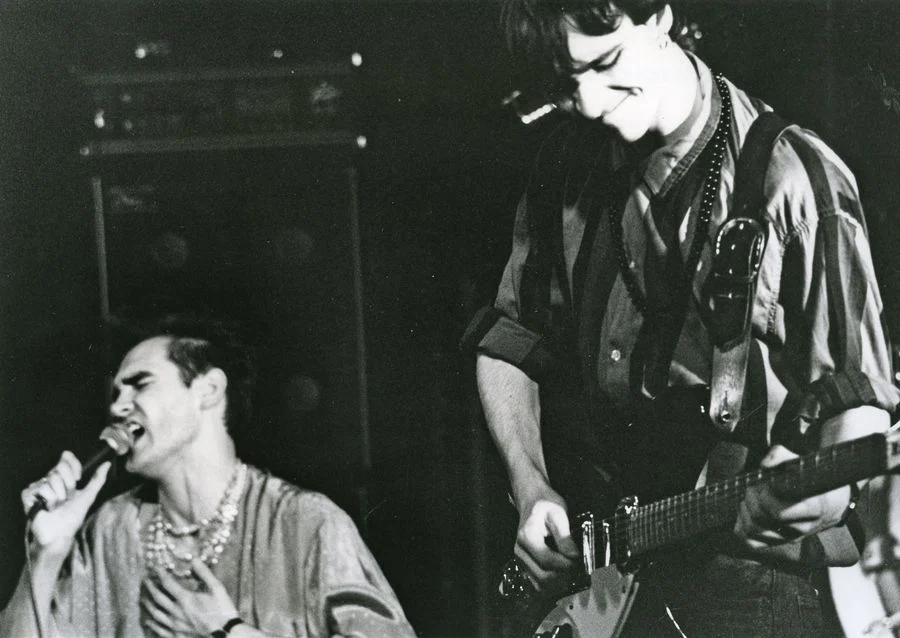
Johnny Marr’s signature playing style is a cornerstone of The Smiths’ distinctive sound. His intricate chord voicings, innovative picking techniques, and melodic sensibilities set him apart from his contemporaries, making him one of the most influential guitarists of his era.
Analysis of Marr’s Chord Voicings and Picking Techniques
Marr’s approach to chord voicings is both sophisticated and unconventional. He often employs complex, jazz-inspired chords and arpeggios, utilizing open strings to create a fuller, more resonant sound. His use of suspended and add9 chords adds a rich harmonic texture that is instantly recognizable. Unlike many guitarists who rely heavily on power chords, Marr’s playing is defined by its melodic intricacy and harmonic depth.
A key aspect of Marr’s technique is his fingerpicking style, which he often combines with strumming. This hybrid approach allows him to articulate individual notes within chords, creating a dynamic interplay between melody and harmony. His ability to seamlessly blend picking and strumming is evident in songs like “This Charming Man,” where his rapid, precise arpeggios form the backbone of the track.
Marr’s right-hand technique is equally important. He frequently uses a technique known as “jangle pop,” characterized by fast, rhythmic strumming patterns that accentuate the high strings. This creates a shimmering, bell-like quality that has become synonymous with his sound. Additionally, Marr’s use of a capo enables him to play familiar chord shapes in different keys, adding to the versatility and richness of his arrangements.
Examples of Songs Showcasing His Distinctive Style
Several songs exemplify Johnny Marr’s distinctive guitar style:
“This Charming Man”: Perhaps the quintessential example of Marr’s brilliance, this track features intricate, ringing arpeggios played in a rapid, fingerpicked style. The song’s upbeat tempo and bright, jangly tone are hallmarks of Marr’s influence.
“How Soon Is Now?”: Known for its iconic tremolo effect, this song showcases Marr’s innovative use of effects and layering. The hypnotic, oscillating guitar line creates a haunting atmosphere, demonstrating his ability to craft unique sonic landscapes.
“The Headmaster Ritual”: Featuring open D tuning, this track highlights Marr’s use of alternative tunings and complex chord voicings. The song’s jangly, syncopated riff is a testament to his rhythmic precision and melodic ingenuity.
“Bigmouth Strikes Again”: This song exemplifies Marr’s rhythmic strumming and use of the capo to achieve a bright, cutting tone. The interplay between the driving rhythm guitar and Morrissey’s vocals showcases the synergy between Marr’s playing and the band’s overall sound.
How His Playing Differentiated The Smiths from Other Bands
Marr’s playing style was a defining element that set The Smiths apart from other bands of the 1980s. While many contemporaries were exploring darker, more aggressive sounds, Marr’s guitar work brought a sense of lightness and melodic complexity to The Smiths’ music. His ability to create intricate, multi-layered guitar parts gave the band a distinctive sound that was both accessible and artistically sophisticated.
Marr’s emphasis on melody and harmonic richness was a stark contrast to the prevailing trends of the time, which often favored power chords and simplistic structures. His influences from 1960s pop, jazz, and folk music infused The Smiths’ songs with a timeless quality, appealing to a wide audience while maintaining a unique voice in the alternative rock landscape.
Moreover, Marr’s technical prowess and innovative use of effects expanded the sonic possibilities for guitarists in the alternative and indie genres. His pioneering techniques and distinctive style have influenced countless musicians, cementing his legacy as a guitar innovator who redefined the role of the instrument in a band setting.
Iconic Riffs and Solos
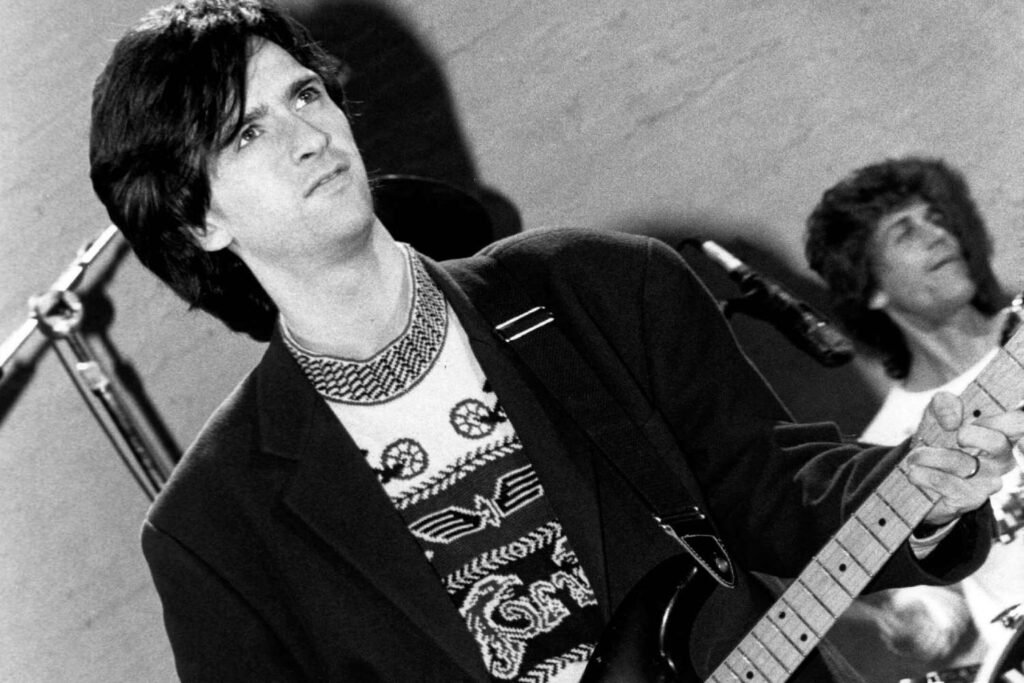
Johnny Marr’s guitar work is synonymous with The Smiths’ sound, and his iconic riffs and solos are a testament to his technical skill and creative vision. Here, we break down some of Marr’s most notable contributions, examining the technical aspects and creative processes behind these parts and their impact on the band’s overall sound.
“This Charming Man”
Riff Breakdown: “This Charming Man” is perhaps the quintessential example of Marr’s intricate, jangly guitar style. The song opens with a fast-paced, arpeggiated riff that immediately grabs the listener’s attention.
Technical Aspects:
Arpeggios: The main riff is composed of rapid arpeggios that require precise fingerpicking and a keen sense of timing.
Open Strings: Marr uses open strings to create a shimmering, resonant sound that adds depth to the riff.
Capo Use: He places a capo on the second fret, which allows for easier finger positioning and a brighter tonal quality.
Creative Process: Marr’s inspiration for this riff came from a desire to combine the melodic sensibilities of 1960s pop with the energy of post-punk. His aim was to create something both catchy and complex, pushing the boundaries of conventional pop guitar playing.
Impact: “This Charming Man” set the tone for The Smiths’ early work, showcasing Marr’s ability to craft memorable, sophisticated guitar parts that complemented Morrissey’s distinctive vocal style. The song’s success helped establish The Smiths as a unique force in the music scene.
“How Soon Is Now?”
Riff Breakdown: The opening riff of “How Soon Is Now?” is one of the most recognizable in rock history, characterized by its hypnotic, tremolo-laden sound.
Technical Aspects:
Tremolo Effect: Marr uses an Electro-Harmonix Memory Man delay and a Fender Twin Reverb amp to achieve the song’s signature tremolo effect, creating a pulsating, otherworldly sound.
Slide Guitar: The riff also features a slide guitar, which adds to the song’s haunting, atmospheric quality.
Layering: Multiple guitar tracks are layered to build a dense, immersive soundscape.
Creative Process: Marr was inspired by Bo Diddley’s use of tremolo and aimed to create a song that felt both timeless and innovative. The layering of guitar tracks was a meticulous process, requiring careful attention to detail to achieve the desired effect.
Impact: “How Soon Is Now?” became an anthem for disenchanted youth and solidified Marr’s reputation as a guitar innovator. The song’s unique sound helped The Smiths reach a broader audience and demonstrated the band’s versatility.
“The Headmaster Ritual”
Riff Breakdown: “The Headmaster Ritual” features a complex, syncopated riff that highlights Marr’s skill with alternative tunings and rhythmic precision.
Technical Aspects:
Open D Tuning: Marr uses open D tuning (DADF#AD), which allows for rich, resonant chord voicings and facilitates the use of open strings.
Syncopation: The riff’s rhythm is syncopated, creating a driving, dynamic feel that propels the song forward.
Fingerpicking: The intricate picking pattern requires dexterity and precision, showcasing Marr’s technical prowess.
Creative Process: Marr sought to capture the feeling of youthful rebellion and discontent in this song. The use of open tuning and syncopated rhythms helped him achieve a sound that was both fresh and evocative.
Impact: “The Headmaster Ritual” exemplified The Smiths’ ability to blend complex musicianship with relatable themes. Marr’s innovative guitar work on this track contributed to the band’s reputation for pushing musical boundaries.
“Bigmouth Strikes Again”
Riff Breakdown: “Bigmouth Strikes Again” features a driving, rhythmic riff that underscores Morrissey’s biting lyrics.
Technical Aspects:
Capo Use: Marr uses a capo on the fourth fret, which brightens the tonal quality and allows for higher-pitched chord voicings.
Rhythmic Strumming: The song’s rhythm is relentless, with fast, aggressive strumming that adds to the song’s urgency.
Melodic Interplay: Marr integrates melodic lines within the strummed chords, adding layers of complexity to the riff.
Creative Process: Marr aimed to create a song that was both energetic and melodic. The interplay between the rhythmic strumming and melodic lines required careful arrangement to ensure that each element complemented the other.
Impact: “Bigmouth Strikes Again” demonstrated The Smiths’ ability to blend wit and intensity in their music. Marr’s riff drove the song’s momentum, making it one of the band’s most memorable tracks.
Closing Thoughts

Johnny Marr’s contributions to music are nothing short of revolutionary. As the driving force behind The Smiths’ distinctive sound, his innovative guitar work redefined the role of the instrument in alternative rock. Marr’s ability to blend intricate melodies, complex chord voicings, and rhythmic precision set him apart from his contemporaries and established him as one of the most influential guitarists of his generation.
Marr’s technical prowess and creative vision were instrumental in crafting some of the most memorable riffs and solos in rock history. His use of unconventional tunings, meticulous attention to gear, and pioneering effects created a sonic landscape that was both rich and innovative. Songs like “This Charming Man,” “How Soon Is Now?,” and “The Headmaster Ritual” showcased his ability to merge technical complexity with melodic accessibility, leaving an indelible mark on the music world.
The lasting significance of Marr’s innovations in guitar playing extends beyond his work with The Smiths. His influence can be heard in the music of countless artists who followed, from the jangle pop of R.E.M. to the Britpop of Oasis and beyond. Marr’s approach to guitar has inspired generations of musicians to explore new sounds and push the boundaries of their craft.
